[click on BLUE links for sources and information]
Huila was irked. A tortilla, made of holy corn, corn made of rain and soil and sun, that tortilla, round as the sun itself! Was God not in the rain? Did the corn not come from God? What of the sun? Was the sun simply some meaningless accident in the sky? Some ball of light meaning nothing, signifying nothing? No! Only a heretic would fail to see God in the sun!
And the meat of the goat, and the flowers the goat ate, and the chiles in the salsa, and the guacamole, and the hands of the fine woman who slapped the tortilla into shape then laid the sizzling meat into it, and the fire, and the fire ring, and the house in which the fire ring burned, and the ancestors who raised the generation that led to the woman making the taco. Only an idiot would fail to see God in a meal!
“If you are too blind to see God in a Goddamned taco,” she exclaimed, “then you are truly blind!”
The Hummingbird’s Daughter by Luis Alberto Urrea
It’s been two years since TITM wrote about our favorite upscale Puerta Vallarta restaurant, Tre Piatti. When we dropped by for a special dinner on our trip south this year, we were surprised to see a new taqueria located right next door, Don Chava Taqueria Cantina. One quick glance and we knew something special was up. We couldn’t wait to question our friends Chanan and Natalie.
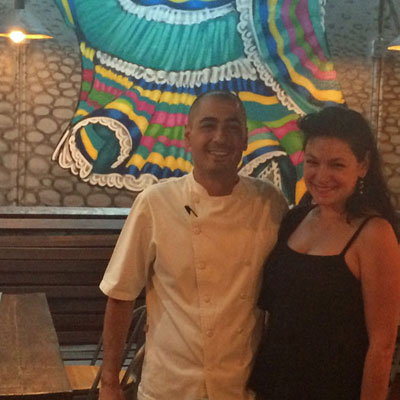
Chanan and Natalie, owners of Tre Piatti and Don Chava
Chanan is quiet and soft spoken. His sly smile is like the tip of an iceberg. He’s always holding something back, an excitement, a pride, a secret knowledge—something he assumes you will pick up on your own. When I’m with him I always think of that Mexican saying “don’t put too much cream on your tacos.” He lives by that rule. It’s a pity so many others don’t.
TITM: “So, why did you start another restaurant?”
Chanan: “Like we needed more to do, right?” He knew exactly what I was thinking.
Natalie is the perfect compliment to her husband, vibrant and beaming with excitement. She is beautiful and filled with an energy that she projects as soon as she enters the room.
Natalie: “We like to travel the world and we’ve always used our profits to take a vacation, you know? But I thought, why not make an investment? Why not create something new?”
TITM: “So you can take more vacations.”
Natalie: “Yea, that’s right,” she laughs.
Chanan: “The space right next to us came available. We had two friends who were expert taco makers. They were all over us so we jumped at it. It is a risk when you rent as we do. The building could be sold out from under us at any time. Putting in all the electric, plumbing, gas lines, and so on plus making the physical changes necessary for the restaurant was expensive. Nothing was here. But now we get to do it our way. So far we’re pretty happy with the results.”
It’s surprising how much experience and poise Chanan and Natalie have acquired at such a young age. (full resumes HERE)
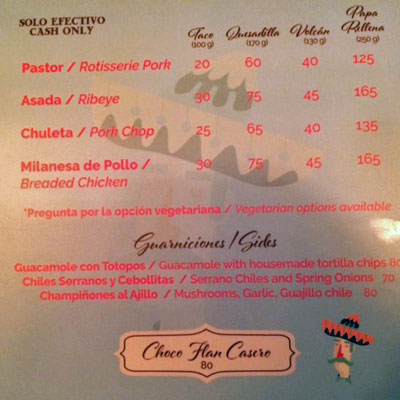
Chef Kamen started his culinary career at age 15, starting in a kitchen as a dishwasher and working his way up. Since then, he has polished his craft at important culinary destinations such as New York City, Miami, San Franscisco and in Italy, where he enjoyed a one-year sabbatical. When ready to open with his wife their own restaurant, Chicago, New York and Puerto Vallarta were their top location choices. (Tre Piatti website)
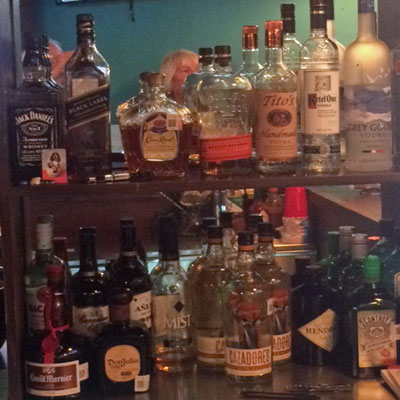
Backbar at Don Chava
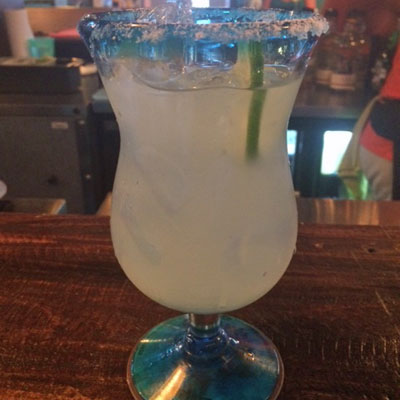
Mezcal Margarita
Don Chava represents the casual, laid-back, Mexican version of the upscale, elegant Italian Tre Piatti. Go to the WEBSITE or to their FACEBOOK PAGE for menus, photos, and more.
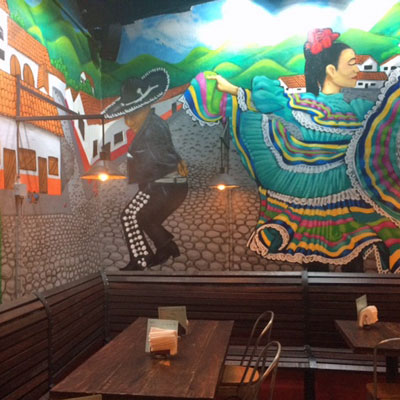
Mural by Misael Ivan Lopez
There’s a new restaurant opening in Puerto Vallarta every five minutes. But our favourite in 2018 was Don Chava — an open and friendly restaurant selling quality tacos and quesadillas at great prices. We love the face their ingredients come from local producers and they make their salsas by hand. Excitingly, they also have a secret menu. But let’s keep that story for another time…
It’s always a good sign when you see the locals streaming in the door. It’s even better when the staff eats there. There is a backroom connection between Tre Piatti and Don Chava. We noticed the staff from Tre Piatti (including our friends Chanan and Natalie) coming and going frequently. It reminded us of the “old days” at our Mendocino restaurant the Sea Gull where we had a coffee shop for the locals and a dining room for the tourists.
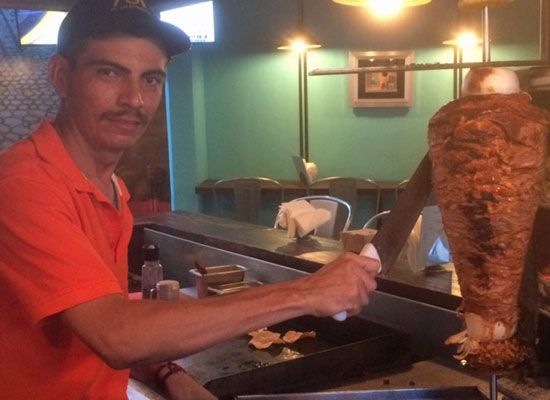
Debi slicing the pork
The origins of the taco are really unknown. My theory is that it dates from the 18th century and the silver mines in Mexico, because in those mines the word “taco” referred to the little charges they would use to excavate the ore. These were pieces of paper that they would wrap around gunpowder and insert into the holes they carved in the rock face. When you think about it, a chicken taquito with a good hot sauce is really a lot like a stick of dynamite. The first references [to the taco] in any sort of archive or dictionary come from the end of the 19th century. And one of the first types of tacos described is called tacos de minero—miner’s tacos. So the taco is not necessarily this age-old cultural expression; it’s not a food that goes back to time immemorial. Jeffrey M. Pilcher
You may be wondering how to tell if the tacos you are eating are authentic. Andre Sólo provides a neat little discussion of the finer points of tacos in his How Are Authentic Mexican Tacos Different From American Tacos? At Don Chava the salsas and guacamole are house made as is the decadent Choco Flan. The expert taco chefs (Puerto Vallarta locals) offer juicy tacos pastor (rotisserie pork), asada (rib eye), chuleta (pork chop) and milanesa de pollo (breaded chicken). In addition to tacos, Don Chava also has quesadillas and volcans (a cheesier version of tacos) and a large plate of papa rellena including potatoes and your choice of meat with tortillas on the side. There are vegetarian versions available and an ample selection of Mexican beer, wines, margaritas and other beverages including nonalcoholic. Garnishes include the typical fresh cilantro and diced white onions. While your waiting you can munch on a complimentary plate of refreshing sliced cucumbers and radishes.
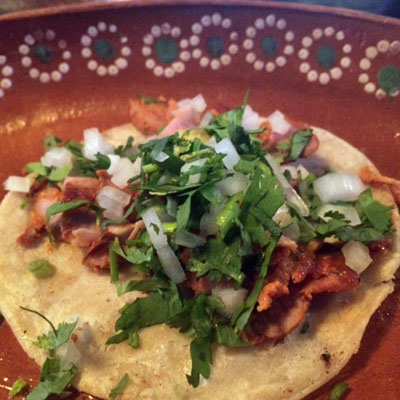
Taco Al Pastor
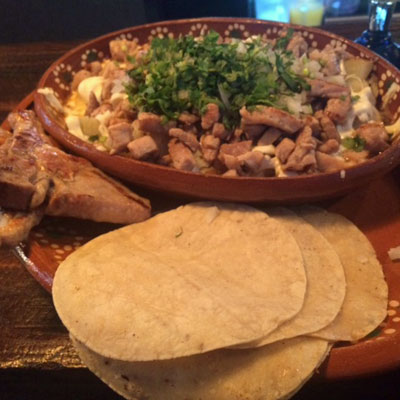
Papas Relleno Chuleta
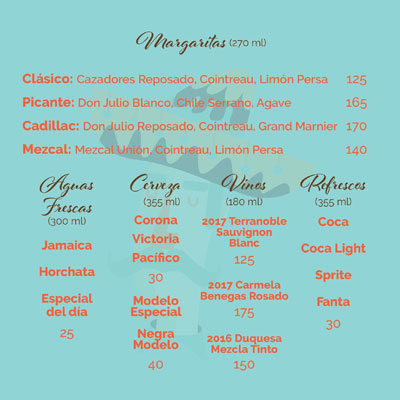
Gustavo Arellano, a journalist in Orange County, in California, is well known for his sly syndicated “¡Ask a Mexican!” column in alternative weekly newspapers. Arellano uncovers the taco’s origin story and explores many other Mexican food mysteries in his 2012 book Taco USA: How Mexican Food Conquered America. Arellano says: I know a lot of Mexicans and people who love Mexican food who believe there’s “real Mexican food” and “fake Mexican food.” To me, if you think it’s Mexican food, it’s Mexican food!
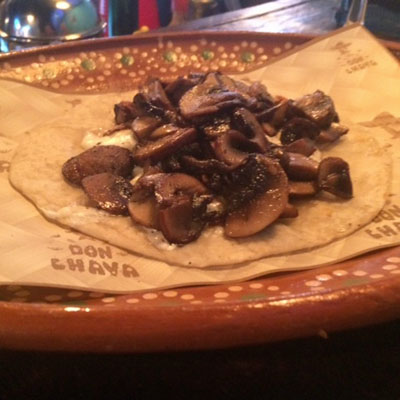
Mushroom Quesadilla
Like Andre Sólo, I got my first taste of Mexican food in a notoriously inauthentic version, Swanson’s TV dinners my mother fixed when I insisted on eating something Mexican. This was when I was in grade school in a small Sacramento Valley town. My sixth grade teacher whetted my appetite with his vivid descriptions of everything Latin. I remember him speaking about the coffee (thick, sweet, almost chewy). I was hooked and I didn’t even drink coffee. The mother of one of my friends was from Puerto Rico and one afternoon a week she would serve cookies and milk to a half dozen of my fellow students while she taught us the days of the week, the numbers, the months, the colors and even Silent Night in Spanish. Of course, we also had migrants from Mexico working in the orchards and fields outside of town, “wetbacks” we called them. I didn’t know it was a derogatory term at the time. The idea of swimming across the Rio Grande was something I saw as fun at my young and naïve age. I worked at the local grocery store and tried out my Spanish on our the Hispanic customers. I remember on day a man came thinking he was speaking English. He asked for “Pee Napoli Wheeze.” I understood immediately what he wanted: Pineapple Juice.
You’re also starting to see new migrants coming into Mexico. For example, there are a lot of Lebanese migrants, and one of the things they bring with them is shawarma, or gyros—vertical rotisseries where they cook lamb, and they put it on little pita breads. But when they start putting [the meat] on tortillas, they’re called tacos arabes: Arab tacos. Again, it’s the second generation, the children of these Lebanese migrants, who change the recipe a little bit and start using pork instead of lamb. And they start adding a little pineapple. Tacos al pastor, which really doesn’t catch on until the 1960s, then becomes a standard Mexican dish that’s everywhere. Jeffrey M. Pilcher
One of the “secret” ingredients I detected in my taco al pastor at Don Chava was s little wedge of pineapple. Very subtle. If you gulp down the taco quickly, you might not even notice, but it’s there and adds to the level of deliciousness.
The history of the taco is fascinating. If you’re interested try Where Did the Taco Come From by Katy June Friesen or The History of the Taco: Where and How This Mexican Icon Was Born by Eric Wichner. And, the classic book on the subject according to my diligent search is Jeffrey M. Pilcher’s Global Taco: A Global History of Mexican Food.
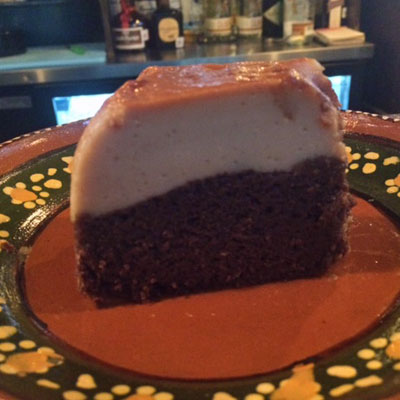
Choco Flan
The word taco comes from the Nahuatl word ‘tlahco’ which means “half or in the middle”, referring to the way it is formed … Almost everything in Mexico starts with corn. Although its origin is unknown, it is believed that the taco was born as the basis of an Olmec diet thanks to the first traces of nixtamalized corn.
You can read all you want about tacos but if you really want to know about them, go to Don Chava. The only way to learn everything you need to know is to have a taste or two. Say hello to my friends Natalie and Chanan. They and their staff work hard so that you can live easy.
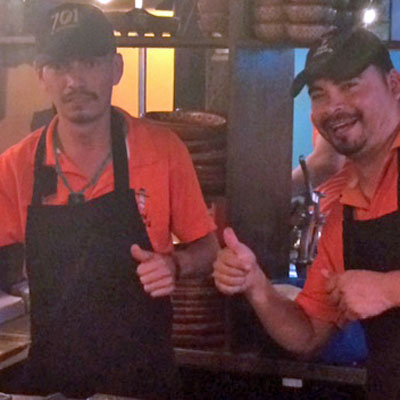
The Chefs Dibi and Tony

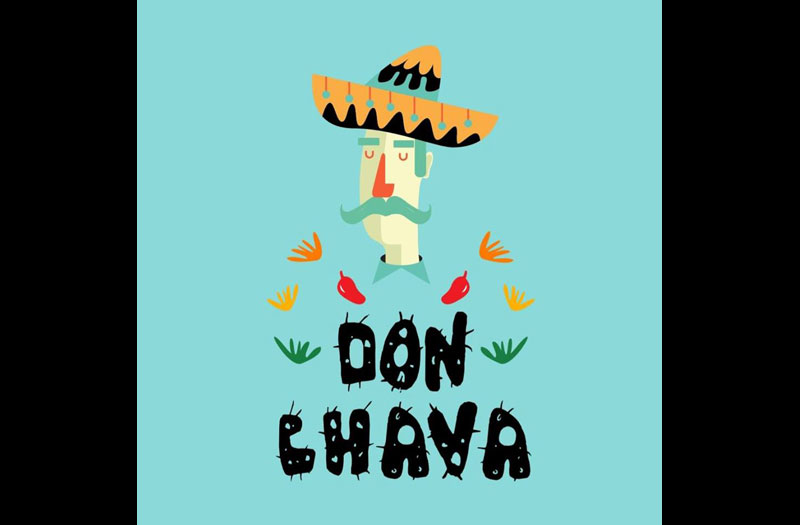
Dude, I’ll be on the next plane out. Tacos, flan, and ‘ritas. What’s not to like. I trust you’re having lots of fun. Fiesta con mi primo!
Wish you were on the way ! Always great to hear from you.
It’s cruel of you to write about all this faraway yummy food, making me drool uselessly!
That James Taylor song actually caused me to go to Mexico around 1976…and Mexico lived up to the dreamy, tantalizing words and music. There were some serious moments during that trip, like the rich Mexican rancher who picked my friends and me up when we were hitchhiking back to Guadalajara after going to a festival in a mountain town. I didn’t speak Spanish, and he didn’t speak English, but we managed to communicate a little in broken French. And he took out his big, shiny 45-caliber revolver, just to flash it at me. All part of a great adventure from my squandered early prime…
“Oh Granny, what big ears you’ve got!” and the wolf replies “All the better to hear you with, my dear!” Red Riding Hood says “Oh Granny, what big teeth you’ve got!” and the wolf replies “All the better to eat you with, my dear!”